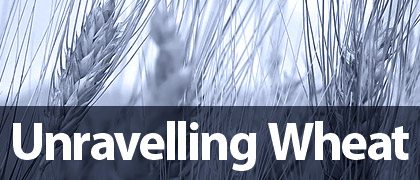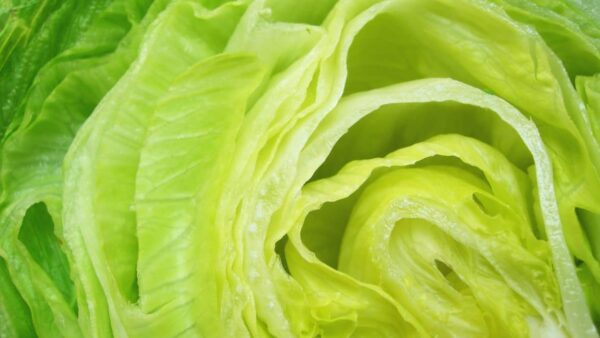
Scientists work to unravel the wheat genome with the goal of producing disease-resistant varieties that have improved milling qualities.
Whether it’s scientists wearing a white lab coat behind a workbench, a crop physiologist with a Tilley hat and boots in the field, or an executive in a suit and tie behind a desk, people from across the global agricultural community — both public and private institutions — have joined forces to unravel the wheat genome.
Known as one of the most complex genomes, bread wheat has more than 21 chromosomes.
“Finding a needle in a haystack is relatively easy compared to locating a gene within a living organism,” says Ron Knox, an Agriculture and Agri-Food Canada molecular geneticist. There are 17 billion nucleotide base pairs in wheat — that’s about five times as many base pairs as contained in the human genome.
Yet, in July Canadian researchers, whom are part of an international team of more than 1,000 scientists, published the first chromosome-based draft sequence of the wheat genome.
“The release of the chromosomal draft of the wheat genome sequence will accelerate gene discovery in wheat, and pave the way for development of tools to improve breeding of complex traits, such as yield, insect and disease resistance, and end-use quality,” says Curtis Pozniak, a University of Saskatchewan professor and co-leader of Canadian Triticum Advancement through Genomics (CTAG).
Pozniak and his team are part of the International Wheat Genome Sequencing Consortium — an expert working group of the Wheat Initiative — that’s working to sequence each of bread wheat’s 21 chromosomes. Genome Canada reports that 75,000 genes have already been mapped to-date.
“The chromosome-based draft provides new insight into the structure, organization and evolution of the large complex genome of the world’s most widely grown cereal crop,” according to the Wheat Initiative, which estimates that a full reference genome sequence can be produced within three years.
“As the staple food for one-third of the human population, it’s extremely important to identify the genes that control the main traits, such as resistance to disease or tolerance to drought or even yield,” says Frédéric Choulet, researcher at Genetics, Diversity and Ecophysiology of Cereals research unit of the French National Institute for Agricultural Research in Clermont-Ferrand-Theix. “From a fundamental viewpoint, it’s important to get access to a reference sequence to understand the evolution of this complex genome and the relationships between the structure of the genome and the gene expression.”
As part of the IWGSC, Pozniak and his team have completed an initial survey sequence on chromosome 6D. Additionally, the CTAG project has worked with other international research partners to develop a first generation capture system, which will enable sequencing of targeted genes within the wheat genome.
Hardest Part Is Yet to Come
Sequencing the genome is probably the easy part, Pozniak says. “Being able to decipher how those genes are working for the traits that we’re interested in will be the big part,” he explains. “But in the meantime, we’re already starting to see the fruits of this project. We’ve developed a number of DNA markers that we use — for example the solid stem trait we see in durum wheat, midge tolerance in both spring and durum wheat. We’ve developed some really nice markers as a result of this sequencing effort.”
AAFC is also collaborating on this front, using molecular genetics to adapt new wheat varieties to increasingly complex market demands and ever-changing environmental risks. Most recently AAFC’s Knox and colleagues have been developing new lines of wheat with resistance to orange wheat blossom midge cereal pest and have developed the first midge-tolerant durum.
While plant breeders such as Pozniak and Knox are investing their time to improve wheat varieties, companies such as Bayer CropScience, Dow AgroSciences, DuPont Pioneer, Monsanto and Syngenta have made a slurry of investments in wheat companies, starting around 2008. For example, in 2009 Monsanto has re-invested in wheat research by purchasing WestBred, a U.S. wheat seed company. Since then, the company has focused its efforts on developing new conventionally bred wheat varieties, while researching
potential uses of genetic modification in wheat. Most recently, Dow AgroSciences, in July of this year, purchased the remaining shares of Advantage Wheats, as part of the company’s strategy to become a key player in wheat in Australia and around the world.
This continued investment by both private companies and public institutions is needed to increase wheat yields by 60 per cent from 2000 to 2050, which is what the World Bank estimates is needed to meet the demands of 9.6 billion people.
“I believe the challenges of 21st-century agriculture and food production are surmountable compared to the past and can be overcome provided we can bring together new knowledge and delivery systems to farmers in a very sustainable manner,” says Sanjaya Rajaram, who is the director of Resource Seed International and the recipient of the 2014 World Food Prize. “Future crop production is bound to decline unless we fully factor in the issues related to climate change, soil fertility and water deficits and utilize advanced genetics in the next 20 to 30 years. It will require all resources from international research centers, national governments, foundations, NGOs and farmers groups together to synergize future agricultural technologies and food production.”
Julie Deering
|
Wheat Breeder To Receive 2014 World Food Prize The importance of wheat and those who work to improve the cereal grain continue to be recognized, as the 2014 World Food Prize honours critical breakthroughs in wheat. Having bred 480 varieties of wheat that have been released in 51 countries on six continents to provide nutritious grains resistant to rust disease and adaptable to a vast array of climates to feed more people, Sanjaya Rajaram was named the 2014 World Food Prize recipient. Rajaram has dedicated his life to making direct improvements for farmers and all people who depend on agriculture. A native of India and now a citizen of Mexico, the majority of his research has been done at the International Maize and Wheat Improvement Center. His work there led to a prodigious increase in world wheat production — by more than 200 million tons during the 25-year-period known as the “golden years of wheat” — building upon the successes of the Green Revolution. |












